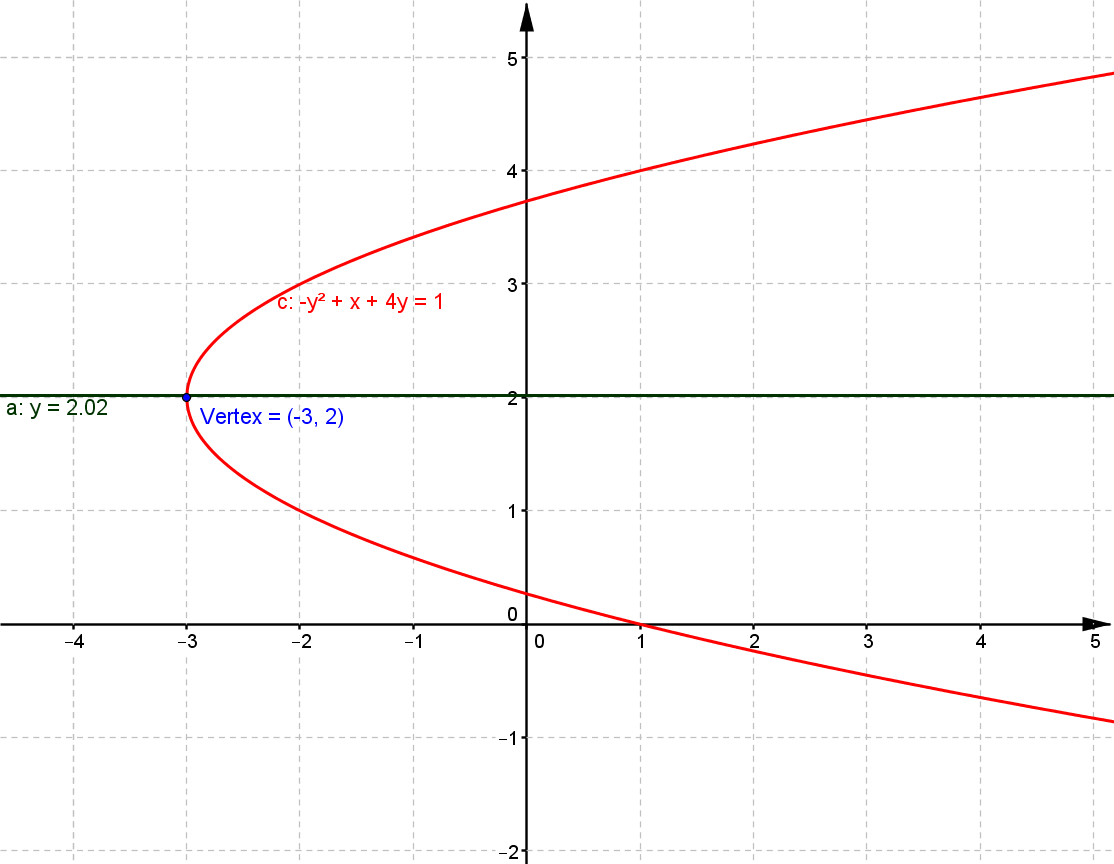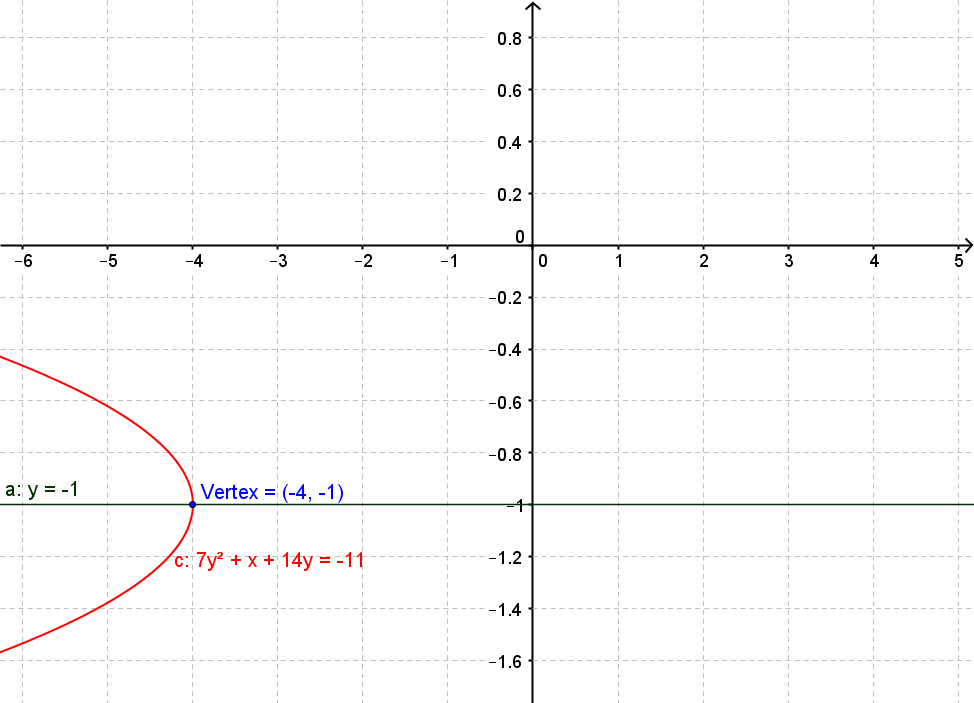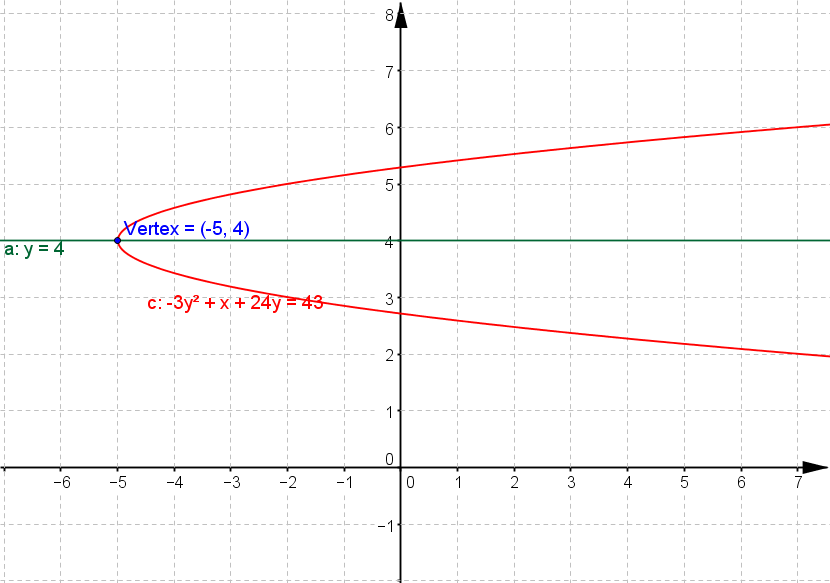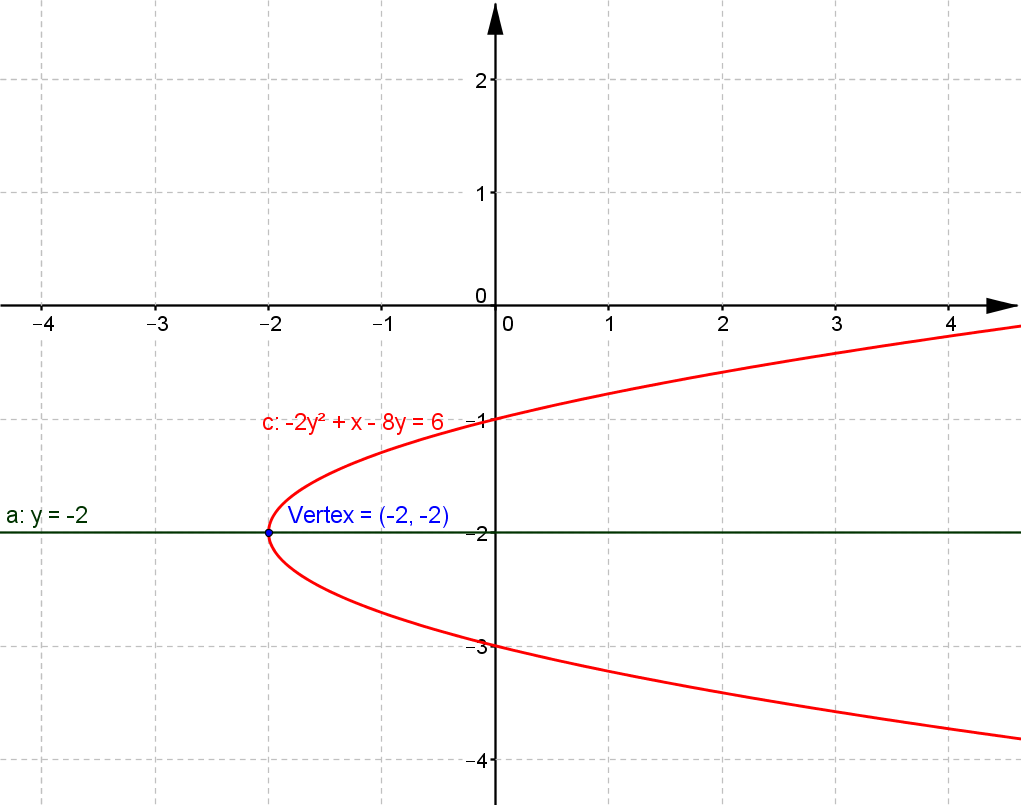Connecting...

This is a quick preview of the lesson. For full access, please Log In or Sign up.
For more information, please see full course syllabus of Algebra 2
For more information, please see full course syllabus of Algebra 2
Algebra 2 Parabolas
Lecture Description
We've already learned that parabolas are the graphs of quadratic functions, but now we are going to learn the definition and the features of the parabola. A parabola is the set of points in the plane whose distance from a given point, called the focus, is equal to its distance from a given line, called the directrix. The axis of symmetry of a parabola passes through the focus and is perpendicular to the directrix. The vertex of a parabola is the point at which the axis of symmetry intersects the parabola. The vertex is the maximum or minimum point on the parabola. In this lecture you'll also learn about different forms of parabola, about graphing, and different properties of parabolas.
Bookmark & Share
Embed
Share this knowledge with your friends!
Copy & Paste this embed code into your website’s HTML
Please ensure that your website editor is in text mode when you paste the code.(In Wordpress, the mode button is on the top right corner.)
×
- - Allow users to view the embedded video in full-size.
Next Lecture
Previous Lecture









































 Carleen Eaton
Carleen Eaton Grant Fraser
Grant Fraser
 Answer Engine
Answer Engine









0 answers
Post by Hannah Yao on August 9, 2022
In example 1, shouldn't the vertex be 2, -2 not -2, 2?
1 answer
Sun Jun 1, 2014 10:00 PM
Post by Sophie Zhong on April 26, 2014
Does the equation h=-b/2a and k=-(b^2-4ac)/4a also apply in horizontal parabolas? Because when I used it for example 1, I came up with h=-(-12/6)=2, k=-2, which is wrong.
1 answer
Thu May 16, 2013 11:10 PM
Post by Saki Amagai on May 16, 2013
I don't know why but.. I'm having trouble watching this entire conic section due to technical issues. I don't have any problem for the other ones. It's just this section that I get "network failure". I really need to watch this... Can you please check if there's nothing wrong with the server? Thank you.
1 answer
Sun Jan 27, 2013 1:01 PM
Post by Monis Mirza on January 26, 2013
how do you find the maximum and minimum of a parabola using the equation?
i have a test on this on monday and i really need the answer!
0 answers
Post by julius mogyorossy on January 11, 2013
Merc, I think you are correct. I dig it that Educator is being advertised on my blog page. Educator said, learn like you are going to live forever, it seems somebody there knows who I am.
1 answer
Thu Feb 9, 2012 7:43 PM
Post by Edmund Mercado on February 9, 2012
For Horizontal Parabolas at 18:57, should the standard form say x = a(y-k)^2 +h instead of
y = a(x-k)^2 +h with the x and y in opposite positions?
0 answers
Post by norman stradleigh on June 21, 2011
thanks really helped me out
1 answer
Mon Jul 5, 2010 5:15 PM
Post by Timothy miranda on June 21, 2010
thanks that cleared it up for me